 I am in my fifth decade of service as a chiropractor. As time has progressed, I am noticing that a larger percentage of my patients are over 65 years of age. I notice this because of the kinds of things patients say to me when they describe their symptoms for their current visit. They will tell me where it hurts, but then they say things like “I guess I have to expect things like this at my age.” I usually have a split response. I say, “Pain is not an inevitable component of aging, but, there are things about aging that make us more vulnerable to creating pain.” I wanted to write today about what those things are that make us more vulnerable to pain as we age.
I am in my fifth decade of service as a chiropractor. As time has progressed, I am noticing that a larger percentage of my patients are over 65 years of age. I notice this because of the kinds of things patients say to me when they describe their symptoms for their current visit. They will tell me where it hurts, but then they say things like “I guess I have to expect things like this at my age.” I usually have a split response. I say, “Pain is not an inevitable component of aging, but, there are things about aging that make us more vulnerable to creating pain.” I wanted to write today about what those things are that make us more vulnerable to pain as we age.
 The first and most annoying one in my view has to do with the steady decrease in our ability to block pain as we age. The part of the brain that manages pain processing becomes less and less capable of blocking pain as we age. While we are young and dumb, we are somewhat protected from having to learn everything through trial and error by making the error less painful. I suspect that if we felt pain in our teens like we do when we are in our 70s, we would never leave the house. It seems like nature keeps ramping up the consequences of our behavior as we age as an anticipation that we will get smarter and be less likely to do dumb things that hurt. I take this as a clue that smart skills in our life are designed to keep us from hurting so much. I will discuss some of those skills shortly, but the modern world is working against us in this regard.
The first and most annoying one in my view has to do with the steady decrease in our ability to block pain as we age. The part of the brain that manages pain processing becomes less and less capable of blocking pain as we age. While we are young and dumb, we are somewhat protected from having to learn everything through trial and error by making the error less painful. I suspect that if we felt pain in our teens like we do when we are in our 70s, we would never leave the house. It seems like nature keeps ramping up the consequences of our behavior as we age as an anticipation that we will get smarter and be less likely to do dumb things that hurt. I take this as a clue that smart skills in our life are designed to keep us from hurting so much. I will discuss some of those skills shortly, but the modern world is working against us in this regard.
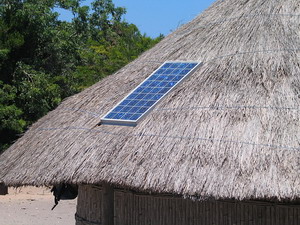 What am I talking about when I say the modern world is working against us? Strangely, one of the greatest benefits of modern life in America is precisely what is hurting us. I am talking about energy management – not oil versus solar power or electrical grid stability – no I am talking about energy management inside our own bodies. Eons ago the evolving human species developed a dual energy system. Other primate species don’t have this. They are stuck depending upon energy from food on a near-daily basis. The reason we don’t find primate species far away from the equator is that they need a year-round food supply. As you get into more northern or southern latitudes, food becomes a seasonal issue. If food is not available to them for even a week, they die. We, on the other hand, can store food as fat on our bodies and survive for months on little or no food. This greatly expanded our territory for migration and supported our climb up the food chain. Some other critters like rats, cats, and dogs can also do this, so they were able to migrate with us.
What am I talking about when I say the modern world is working against us? Strangely, one of the greatest benefits of modern life in America is precisely what is hurting us. I am talking about energy management – not oil versus solar power or electrical grid stability – no I am talking about energy management inside our own bodies. Eons ago the evolving human species developed a dual energy system. Other primate species don’t have this. They are stuck depending upon energy from food on a near-daily basis. The reason we don’t find primate species far away from the equator is that they need a year-round food supply. As you get into more northern or southern latitudes, food becomes a seasonal issue. If food is not available to them for even a week, they die. We, on the other hand, can store food as fat on our bodies and survive for months on little or no food. This greatly expanded our territory for migration and supported our climb up the food chain. Some other critters like rats, cats, and dogs can also do this, so they were able to migrate with us.
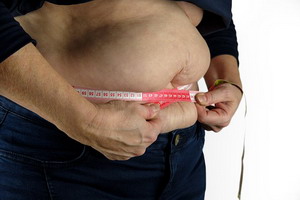 These days we are not so thrilled with this precious genetic adaptation of fat storage. But through most of human existence, this capacity was critical for our survival. Historically many cultures recognized this and perceived those with extra pounds as more attractive. But then historically, having enough food to be able to put on those extra pounds showed that you were a winner in life. Food was not that easy to come by.
These days we are not so thrilled with this precious genetic adaptation of fat storage. But through most of human existence, this capacity was critical for our survival. Historically many cultures recognized this and perceived those with extra pounds as more attractive. But then historically, having enough food to be able to put on those extra pounds showed that you were a winner in life. Food was not that easy to come by.
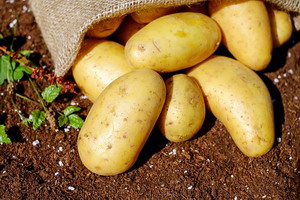 Our dual energy system is our ability to burn either sugar (glucose) or fats. Our body can not store more than a half a days worth of sugar for energy, but it can store months’ worth of energy as fat. When you eat most plant foods, you are eating sugar in various forms. Plants are made of long chains of sugar molecules. Wood is just long chains of sugar. Potatoes, tomatoes, broccoli, rice, wheat, fruit, and salad greens are all just sugar. Occasionally, a few plants store energy as fats, like in olives, avocados, and coconuts. But most plant foods are broken down into sugar to fuel our bodies for a few hours at best. In a natural world with the ready availability of these foods, this works just fine, to a point. But the human species was able to thrive all over the planet by becoming omnivores. We could eat almost anything, anywhere, and survive. We were adaptable.
Our dual energy system is our ability to burn either sugar (glucose) or fats. Our body can not store more than a half a days worth of sugar for energy, but it can store months’ worth of energy as fat. When you eat most plant foods, you are eating sugar in various forms. Plants are made of long chains of sugar molecules. Wood is just long chains of sugar. Potatoes, tomatoes, broccoli, rice, wheat, fruit, and salad greens are all just sugar. Occasionally, a few plants store energy as fats, like in olives, avocados, and coconuts. But most plant foods are broken down into sugar to fuel our bodies for a few hours at best. In a natural world with the ready availability of these foods, this works just fine, to a point. But the human species was able to thrive all over the planet by becoming omnivores. We could eat almost anything, anywhere, and survive. We were adaptable.
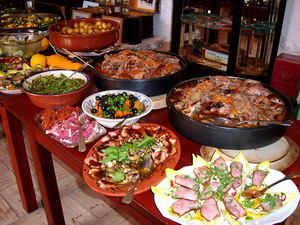 However, right now we are faced with a survival challenge that we have not yet been able to adapt to – abundance. Our genes are adapted to surviving in scarcity. We are set up to eat as much as we can and store everything we don’t need as fat. This process sets up an inflammatory condition we now call metabolic syndrome. Historically this actually helped us because it promoted fat gain during the harvest months in late summer and fall. We could eat all we could grab and store it as fat in anticipation of the lean times in the coming winter. The lean times reversed the inflammation and repaired the imbalances of the metabolic syndrome to restore our health just in time for spring. But with the presence of an abundance of food calories available all year long, we find ourselves falling into metabolic syndrome and never coming out. Currently, almost 80% of Americans are overweight or obese and 37% have frank metabolic syndrome. This is an energy management epidemic.
However, right now we are faced with a survival challenge that we have not yet been able to adapt to – abundance. Our genes are adapted to surviving in scarcity. We are set up to eat as much as we can and store everything we don’t need as fat. This process sets up an inflammatory condition we now call metabolic syndrome. Historically this actually helped us because it promoted fat gain during the harvest months in late summer and fall. We could eat all we could grab and store it as fat in anticipation of the lean times in the coming winter. The lean times reversed the inflammation and repaired the imbalances of the metabolic syndrome to restore our health just in time for spring. But with the presence of an abundance of food calories available all year long, we find ourselves falling into metabolic syndrome and never coming out. Currently, almost 80% of Americans are overweight or obese and 37% have frank metabolic syndrome. This is an energy management epidemic.
 So what does all of this have to do with our expectation of more pain as we get older versus aging gracefully? Yes, this does all tie together somehow. The key place where this unites is inside each of our cells at the energy factories called mitochondria. At the end of the energy production line, it is inside the mitochondria that either sugar or fat gets turned into the energy we need to do everything. That everything we are talking about is aging gracefully. Feeling good takes energy. Doing anything at all takes energy. Resisting infections takes energy. Healing wounds takes energy. Even digesting your food takes energy. And as we grow older these energy factories wear out. Actually, they are slowly destroyed by the chemical process of making energy. Now you would think that our body would constantly make new mitochondria to compensate for this. It can do this. It is called mitochondrial biogenesis. But it does not do this when we are fat and happy. Cells form more mitochondria when they are under certain types of stress, like strenuous physical activity and a lack of food. Throughout most of human history, both of these happened regularly. Our lack of food in the winter and the typically hard lifestyle of most humans provided just the right stimulus for rebuilding fresh energy factories all throughout our life. That is not happening these days.
So what does all of this have to do with our expectation of more pain as we get older versus aging gracefully? Yes, this does all tie together somehow. The key place where this unites is inside each of our cells at the energy factories called mitochondria. At the end of the energy production line, it is inside the mitochondria that either sugar or fat gets turned into the energy we need to do everything. That everything we are talking about is aging gracefully. Feeling good takes energy. Doing anything at all takes energy. Resisting infections takes energy. Healing wounds takes energy. Even digesting your food takes energy. And as we grow older these energy factories wear out. Actually, they are slowly destroyed by the chemical process of making energy. Now you would think that our body would constantly make new mitochondria to compensate for this. It can do this. It is called mitochondrial biogenesis. But it does not do this when we are fat and happy. Cells form more mitochondria when they are under certain types of stress, like strenuous physical activity and a lack of food. Throughout most of human history, both of these happened regularly. Our lack of food in the winter and the typically hard lifestyle of most humans provided just the right stimulus for rebuilding fresh energy factories all throughout our life. That is not happening these days.
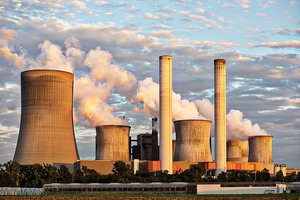 Without a fresh supply of energy factories every year we feel older and more tired – you know, that old age feeling. Without energy we can’t keep our muscles strong, our immune system goes to pot, and we start accumulating chronic diseases like heart disease, diabetes, and cancer. In fact, the current view on cancer is that it is all about a failure of mitochondrial function. In my office, I see this as poor muscle tone and poor neurological functioning creating glitches in proper muscle balance. This is what causes most of the issues with things in the spine just going ‘out’. This is what folks are referring to when they say “Oh, I guess I just have to expect this.” The biggest impact I am seeing in people I know is how this affects the brain. As the production of energy slows down, memory starts to fail. The ability to focus gets worse. Even staying awake becomes a challenge. Dementia is not my idea of aging gracefully.
Without a fresh supply of energy factories every year we feel older and more tired – you know, that old age feeling. Without energy we can’t keep our muscles strong, our immune system goes to pot, and we start accumulating chronic diseases like heart disease, diabetes, and cancer. In fact, the current view on cancer is that it is all about a failure of mitochondrial function. In my office, I see this as poor muscle tone and poor neurological functioning creating glitches in proper muscle balance. This is what causes most of the issues with things in the spine just going ‘out’. This is what folks are referring to when they say “Oh, I guess I just have to expect this.” The biggest impact I am seeing in people I know is how this affects the brain. As the production of energy slows down, memory starts to fail. The ability to focus gets worse. Even staying awake becomes a challenge. Dementia is not my idea of aging gracefully.
 For those of you that are still young enough to engage in strenuous physical activity on a regular basis, I encourage you to do this. Many of my patients are too far down this road to do this. Activity has to be in light and small doses because muscles strain easily and don’t repair quickly. For these people, we need a different approach. What Ellen and I are doing is providing our bodies with a break from food excess a couple of days a week. We are basically eating just greens and fiber on Thursdays and Fridays. So from late afternoon on Wednesday until after my gym workout Saturday morning, we will eat either green salads with no protein or starchy components to it or a fiber soup made with cabbage, cauliflower, green beans, and konjac zero carb noodles in a lite broth base…that’s it. This allows our bodies to slip into autophagy, the state where we will trigger mitochondrial biogenesis plus a lot of other good things. We don’t get hungry as we are able to eat what quantity we want of these foods, but it fits the requirements to convince our bodies that we are taking a rest from food for a few days. This fits the bill for smaller steps than having little to nothing to eat for a couple of months over the winter.
For those of you that are still young enough to engage in strenuous physical activity on a regular basis, I encourage you to do this. Many of my patients are too far down this road to do this. Activity has to be in light and small doses because muscles strain easily and don’t repair quickly. For these people, we need a different approach. What Ellen and I are doing is providing our bodies with a break from food excess a couple of days a week. We are basically eating just greens and fiber on Thursdays and Fridays. So from late afternoon on Wednesday until after my gym workout Saturday morning, we will eat either green salads with no protein or starchy components to it or a fiber soup made with cabbage, cauliflower, green beans, and konjac zero carb noodles in a lite broth base…that’s it. This allows our bodies to slip into autophagy, the state where we will trigger mitochondrial biogenesis plus a lot of other good things. We don’t get hungry as we are able to eat what quantity we want of these foods, but it fits the requirements to convince our bodies that we are taking a rest from food for a few days. This fits the bill for smaller steps than having little to nothing to eat for a couple of months over the winter.
Take care,
David
Ellen 
Here it is, father’s day weekend. We decided to celebrate by going to the movies to see The Flash. It was really quite good! There were lots of cameos by various characters from other TV and movie versions of the DC universe of super hero story lines. This made things all the more fun for fans of this universe.
 Taurine amino acid fight agingThe common amino acid taurine is being found to increase the lifespan of mice 25%. This work needs to be replicated in humans, but since taurine does many many things in the body that are useful these findings could easily hold true for humans. The work is still early, but taurine is easily found in shellfish and dark meats.
Taurine amino acid fight agingThe common amino acid taurine is being found to increase the lifespan of mice 25%. This work needs to be replicated in humans, but since taurine does many many things in the body that are useful these findings could easily hold true for humans. The work is still early, but taurine is easily found in shellfish and dark meats.
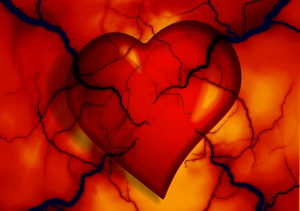 Stem cell therapy regenerates damaged heartsTests on pigs have demonstrated that injecting stem cells into the damaged hearts caused rapid improvement in function by turning into and creating new heart cells. In the near future stem cell therapy may be the treatment of choice following a heart attack.
Stem cell therapy regenerates damaged heartsTests on pigs have demonstrated that injecting stem cells into the damaged hearts caused rapid improvement in function by turning into and creating new heart cells. In the near future stem cell therapy may be the treatment of choice following a heart attack.
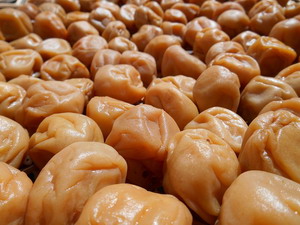 Japanese plum extract stops hypertensionHypertension results from a chain of hormonal effects, and this plum extract blocks one of these steps. The plum itself is toxic, but the4 Japanese have been using a safe extract of this plum since the 18th century to fight heart ailments.
Japanese plum extract stops hypertensionHypertension results from a chain of hormonal effects, and this plum extract blocks one of these steps. The plum itself is toxic, but the4 Japanese have been using a safe extract of this plum since the 18th century to fight heart ailments.
 I am in my fifth decade of service as a chiropractor. As time has progressed, I am noticing that a larger percentage of my patients are over 65 years of age. I notice this because of the kinds of things patients say to me when they describe their symptoms for their current visit. They will tell me where it hurts, but then they say things like “I guess I have to expect things like this at my age.” I usually have a split response. I say, “Pain is not an inevitable component of aging, but, there are things about aging that make us more vulnerable to creating pain.” I wanted to write today about what those things are that make us more vulnerable to pain as we age.
I am in my fifth decade of service as a chiropractor. As time has progressed, I am noticing that a larger percentage of my patients are over 65 years of age. I notice this because of the kinds of things patients say to me when they describe their symptoms for their current visit. They will tell me where it hurts, but then they say things like “I guess I have to expect things like this at my age.” I usually have a split response. I say, “Pain is not an inevitable component of aging, but, there are things about aging that make us more vulnerable to creating pain.” I wanted to write today about what those things are that make us more vulnerable to pain as we age. The first and most annoying one in my view has to do with the steady decrease in our ability to block pain as we age. The part of the brain that manages pain processing becomes less and less capable of blocking pain as we age. While we are young and dumb, we are somewhat protected from having to learn everything through trial and error by making the error less painful. I suspect that if we felt pain in our teens like we do when we are in our 70s, we would never leave the house. It seems like nature keeps ramping up the consequences of our behavior as we age as an anticipation that we will get smarter and be less likely to do dumb things that hurt. I take this as a clue that smart skills in our life are designed to keep us from hurting so much. I will discuss some of those skills shortly, but the modern world is working against us in this regard.
The first and most annoying one in my view has to do with the steady decrease in our ability to block pain as we age. The part of the brain that manages pain processing becomes less and less capable of blocking pain as we age. While we are young and dumb, we are somewhat protected from having to learn everything through trial and error by making the error less painful. I suspect that if we felt pain in our teens like we do when we are in our 70s, we would never leave the house. It seems like nature keeps ramping up the consequences of our behavior as we age as an anticipation that we will get smarter and be less likely to do dumb things that hurt. I take this as a clue that smart skills in our life are designed to keep us from hurting so much. I will discuss some of those skills shortly, but the modern world is working against us in this regard. What am I talking about when I say the modern world is working against us? Strangely, one of the greatest benefits of modern life in America is precisely what is hurting us. I am talking about energy management – not oil versus solar power or electrical grid stability – no I am talking about energy management inside our own bodies. Eons ago the evolving human species developed a dual energy system. Other primate species don’t have this. They are stuck depending upon energy from food on a near-daily basis. The reason we don’t find primate species far away from the equator is that they need a year-round food supply. As you get into more northern or southern latitudes, food becomes a seasonal issue. If food is not available to them for even a week, they die. We, on the other hand, can store food as fat on our bodies and survive for months on little or no food. This greatly expanded our territory for migration and supported our climb up the food chain. Some other critters like rats, cats, and dogs can also do this, so they were able to migrate with us.
What am I talking about when I say the modern world is working against us? Strangely, one of the greatest benefits of modern life in America is precisely what is hurting us. I am talking about energy management – not oil versus solar power or electrical grid stability – no I am talking about energy management inside our own bodies. Eons ago the evolving human species developed a dual energy system. Other primate species don’t have this. They are stuck depending upon energy from food on a near-daily basis. The reason we don’t find primate species far away from the equator is that they need a year-round food supply. As you get into more northern or southern latitudes, food becomes a seasonal issue. If food is not available to them for even a week, they die. We, on the other hand, can store food as fat on our bodies and survive for months on little or no food. This greatly expanded our territory for migration and supported our climb up the food chain. Some other critters like rats, cats, and dogs can also do this, so they were able to migrate with us. These days we are not so thrilled with this precious genetic adaptation of fat storage. But through most of human existence, this capacity was critical for our survival. Historically many cultures recognized this and perceived those with extra pounds as more attractive. But then historically, having enough food to be able to put on those extra pounds showed that you were a winner in life. Food was not that easy to come by.
These days we are not so thrilled with this precious genetic adaptation of fat storage. But through most of human existence, this capacity was critical for our survival. Historically many cultures recognized this and perceived those with extra pounds as more attractive. But then historically, having enough food to be able to put on those extra pounds showed that you were a winner in life. Food was not that easy to come by. Our dual energy system is our ability to burn either sugar (glucose) or fats. Our body can not store more than a half a days worth of sugar for energy, but it can store months’ worth of energy as fat. When you eat most plant foods, you are eating sugar in various forms. Plants are made of long chains of sugar molecules. Wood is just long chains of sugar. Potatoes, tomatoes, broccoli, rice, wheat, fruit, and salad greens are all just sugar. Occasionally, a few plants store energy as fats, like in olives, avocados, and coconuts. But most plant foods are broken down into sugar to fuel our bodies for a few hours at best. In a natural world with the ready availability of these foods, this works just fine, to a point. But the human species was able to thrive all over the planet by becoming omnivores. We could eat almost anything, anywhere, and survive. We were adaptable.
Our dual energy system is our ability to burn either sugar (glucose) or fats. Our body can not store more than a half a days worth of sugar for energy, but it can store months’ worth of energy as fat. When you eat most plant foods, you are eating sugar in various forms. Plants are made of long chains of sugar molecules. Wood is just long chains of sugar. Potatoes, tomatoes, broccoli, rice, wheat, fruit, and salad greens are all just sugar. Occasionally, a few plants store energy as fats, like in olives, avocados, and coconuts. But most plant foods are broken down into sugar to fuel our bodies for a few hours at best. In a natural world with the ready availability of these foods, this works just fine, to a point. But the human species was able to thrive all over the planet by becoming omnivores. We could eat almost anything, anywhere, and survive. We were adaptable. However, right now we are faced with a survival challenge that we have not yet been able to adapt to – abundance. Our genes are adapted to surviving in scarcity. We are set up to eat as much as we can and store everything we don’t need as fat. This process sets up an inflammatory condition we now call metabolic syndrome. Historically this actually helped us because it promoted fat gain during the harvest months in late summer and fall. We could eat all we could grab and store it as fat in anticipation of the lean times in the coming winter. The lean times reversed the inflammation and repaired the imbalances of the metabolic syndrome to restore our health just in time for spring. But with the presence of an abundance of food calories available all year long, we find ourselves falling into metabolic syndrome and never coming out. Currently, almost 80% of Americans are overweight or obese and 37% have frank metabolic syndrome. This is an energy management epidemic.
However, right now we are faced with a survival challenge that we have not yet been able to adapt to – abundance. Our genes are adapted to surviving in scarcity. We are set up to eat as much as we can and store everything we don’t need as fat. This process sets up an inflammatory condition we now call metabolic syndrome. Historically this actually helped us because it promoted fat gain during the harvest months in late summer and fall. We could eat all we could grab and store it as fat in anticipation of the lean times in the coming winter. The lean times reversed the inflammation and repaired the imbalances of the metabolic syndrome to restore our health just in time for spring. But with the presence of an abundance of food calories available all year long, we find ourselves falling into metabolic syndrome and never coming out. Currently, almost 80% of Americans are overweight or obese and 37% have frank metabolic syndrome. This is an energy management epidemic. So what does all of this have to do with our expectation of more pain as we get older versus aging gracefully? Yes, this does all tie together somehow. The key place where this unites is inside each of our cells at the energy factories called mitochondria. At the end of the energy production line, it is inside the mitochondria that either sugar or fat gets turned into the energy we need to do everything. That everything we are talking about is aging gracefully. Feeling good takes energy. Doing anything at all takes energy. Resisting infections takes energy. Healing wounds takes energy. Even digesting your food takes energy. And as we grow older these energy factories wear out. Actually, they are slowly destroyed by the chemical process of making energy. Now you would think that our body would constantly make new mitochondria to compensate for this. It can do this. It is called mitochondrial biogenesis. But it does not do this when we are fat and happy. Cells form more mitochondria when they are under certain types of stress, like strenuous physical activity and a lack of food. Throughout most of human history, both of these happened regularly. Our lack of food in the winter and the typically hard lifestyle of most humans provided just the right stimulus for rebuilding fresh energy factories all throughout our life. That is not happening these days.
So what does all of this have to do with our expectation of more pain as we get older versus aging gracefully? Yes, this does all tie together somehow. The key place where this unites is inside each of our cells at the energy factories called mitochondria. At the end of the energy production line, it is inside the mitochondria that either sugar or fat gets turned into the energy we need to do everything. That everything we are talking about is aging gracefully. Feeling good takes energy. Doing anything at all takes energy. Resisting infections takes energy. Healing wounds takes energy. Even digesting your food takes energy. And as we grow older these energy factories wear out. Actually, they are slowly destroyed by the chemical process of making energy. Now you would think that our body would constantly make new mitochondria to compensate for this. It can do this. It is called mitochondrial biogenesis. But it does not do this when we are fat and happy. Cells form more mitochondria when they are under certain types of stress, like strenuous physical activity and a lack of food. Throughout most of human history, both of these happened regularly. Our lack of food in the winter and the typically hard lifestyle of most humans provided just the right stimulus for rebuilding fresh energy factories all throughout our life. That is not happening these days. Without a fresh supply of energy factories every year we feel older and more tired – you know, that old age feeling. Without energy we can’t keep our muscles strong, our immune system goes to pot, and we start accumulating chronic diseases like heart disease, diabetes, and cancer. In fact, the current view on cancer is that it is all about a failure of mitochondrial function. In my office, I see this as poor muscle tone and poor neurological functioning creating glitches in proper muscle balance. This is what causes most of the issues with things in the spine just going ‘out’. This is what folks are referring to when they say “Oh, I guess I just have to expect this.” The biggest impact I am seeing in people I know is how this affects the brain. As the production of energy slows down, memory starts to fail. The ability to focus gets worse. Even staying awake becomes a challenge. Dementia is not my idea of aging gracefully.
Without a fresh supply of energy factories every year we feel older and more tired – you know, that old age feeling. Without energy we can’t keep our muscles strong, our immune system goes to pot, and we start accumulating chronic diseases like heart disease, diabetes, and cancer. In fact, the current view on cancer is that it is all about a failure of mitochondrial function. In my office, I see this as poor muscle tone and poor neurological functioning creating glitches in proper muscle balance. This is what causes most of the issues with things in the spine just going ‘out’. This is what folks are referring to when they say “Oh, I guess I just have to expect this.” The biggest impact I am seeing in people I know is how this affects the brain. As the production of energy slows down, memory starts to fail. The ability to focus gets worse. Even staying awake becomes a challenge. Dementia is not my idea of aging gracefully. For those of you that are still young enough to engage in strenuous physical activity on a regular basis, I encourage you to do this. Many of my patients are too far down this road to do this. Activity has to be in light and small doses because muscles strain easily and don’t repair quickly. For these people, we need a different approach. What Ellen and I are doing is providing our bodies with a break from food excess a couple of days a week. We are basically eating just greens and fiber on Thursdays and Fridays. So from late afternoon on Wednesday until after my gym workout Saturday morning, we will eat either green salads with no protein or starchy components to it or a fiber soup made with cabbage, cauliflower, green beans, and konjac zero carb noodles in a lite broth base…that’s it. This allows our bodies to slip into autophagy, the state where we will trigger mitochondrial biogenesis plus a lot of other good things. We don’t get hungry as we are able to eat what quantity we want of these foods, but it fits the requirements to convince our bodies that we are taking a rest from food for a few days. This fits the bill for smaller steps than having little to nothing to eat for a couple of months over the winter.
For those of you that are still young enough to engage in strenuous physical activity on a regular basis, I encourage you to do this. Many of my patients are too far down this road to do this. Activity has to be in light and small doses because muscles strain easily and don’t repair quickly. For these people, we need a different approach. What Ellen and I are doing is providing our bodies with a break from food excess a couple of days a week. We are basically eating just greens and fiber on Thursdays and Fridays. So from late afternoon on Wednesday until after my gym workout Saturday morning, we will eat either green salads with no protein or starchy components to it or a fiber soup made with cabbage, cauliflower, green beans, and konjac zero carb noodles in a lite broth base…that’s it. This allows our bodies to slip into autophagy, the state where we will trigger mitochondrial biogenesis plus a lot of other good things. We don’t get hungry as we are able to eat what quantity we want of these foods, but it fits the requirements to convince our bodies that we are taking a rest from food for a few days. This fits the bill for smaller steps than having little to nothing to eat for a couple of months over the winter.